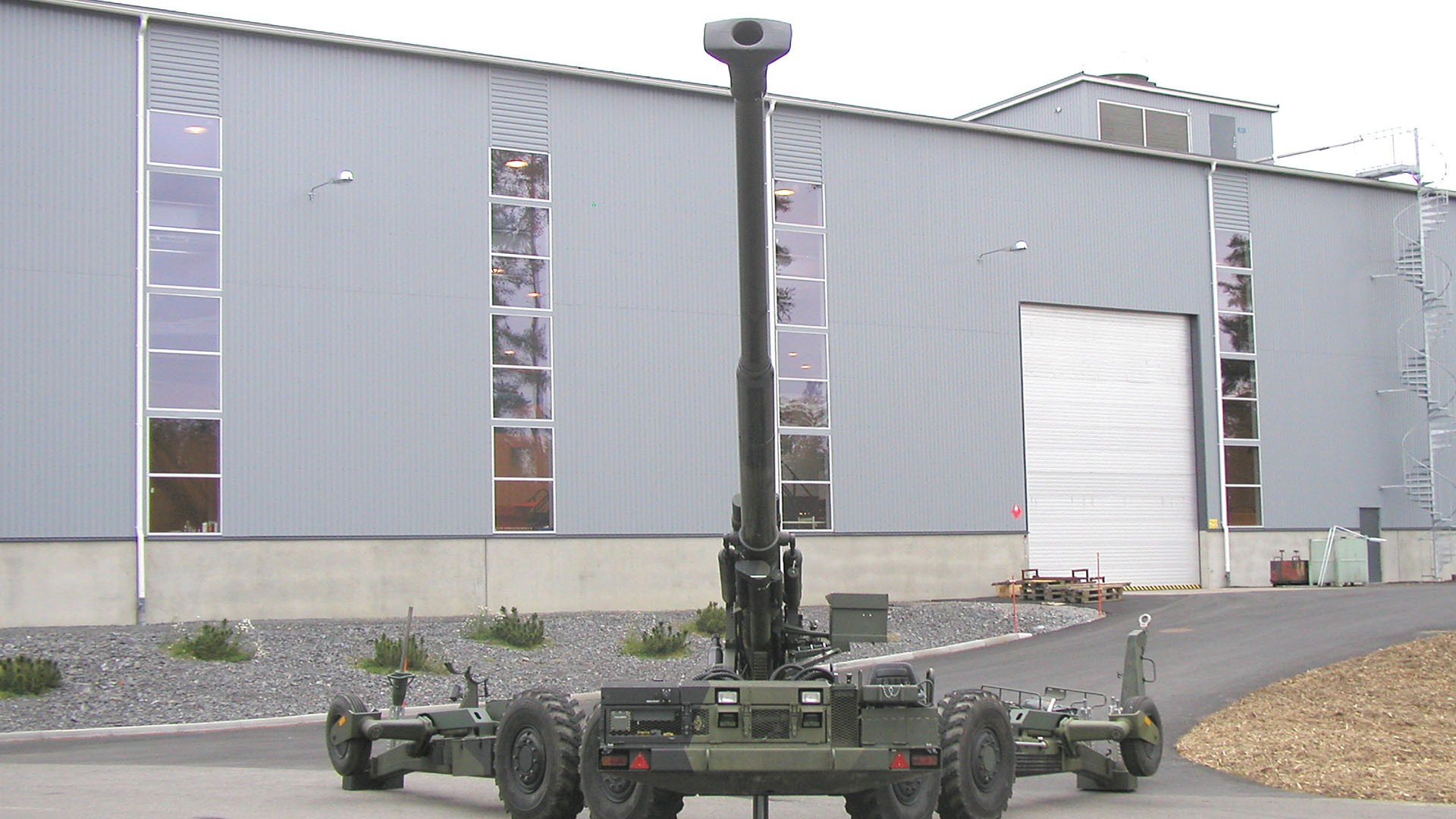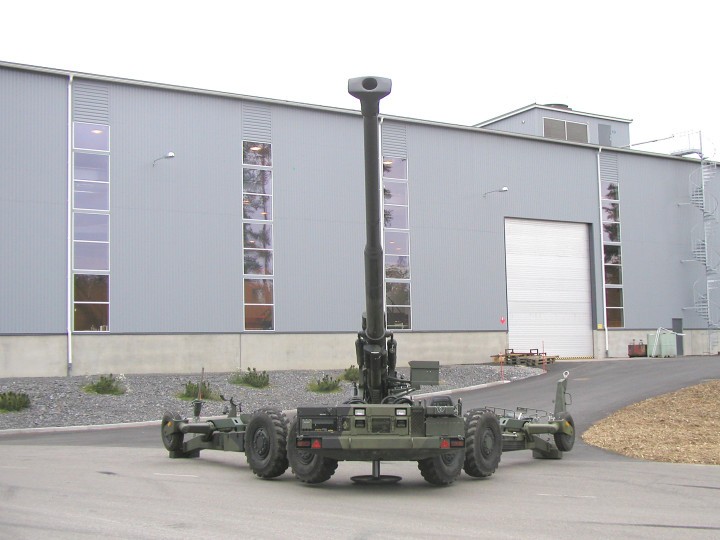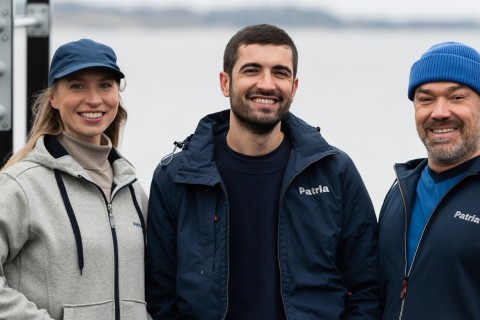

Patria has maintained its strong expertise in field gun manufacture
2.12.2024



Patria has full readiness to restart the production of field guns. The company also has a solution for improving the critical mobility of artillery.
One of the lessons learnt from the war in Ukraine is that traditional artillery still plays a key role in modern warfare. Compared to other European countries, Finland has strong artillery.
– Nevertheless, Patria has maintained strong know-how in gun production and development, says Vesa Toivonen, Weapon Systems Testing Manager at Patria, who has been closely involved in field gun development work during his long career.
The 155 millimetre 155K98 field cannon currently used by the Finnish Defence Forces is based on decades of development at Patria and its predecessors Tampella and Vammas.
– It all started in the early 1950s when the Defence Forces asked Tampella to develop a general-purpose gun suitable for a range of applications. This work resulted in the 122K60 field gun, says Toivonen.
The current field gun is based on long development

Toivonen says that the next big step in product development was taken when the barrel diameter was enlarged from 122 mm, which had been found to be inadequate, to its current size of 155 mm.
– The next significant development phase was the lengthening of the barrel to increase the range of the shell.
Several gun models have been developed over the years. The current Patria 155K98 field cannon was deployed by the Finnish Defence Forces in 1998 and produced until 2005. Until these days Patria has been developed and provided all component.
It has a barrel length of about 8 metres and a range of 40 km. The weapon is towed close to the firing position by an off-road truck. It is then driven to the site under its own power. The gun has an engine that enables independent mobility.

The current field gun is based on long development
Patria has maintained its gun and mortar expertise
Since its establishment, Patria has delivered almost 200 field guns to the Finnish Defence Forces. The last of these guns was handed over in 2005. Since then, Patria has drawn on its deep expertise in gun maintenance, upkeep and upgrades in partnership with Millog.
Patria has also handled numerous improvements to the guns over the years.
– One of the greatest changes was the introduction of a new towing bar. Ensuring its durability and functionality called for careful design at Patria, says Toivonen.
Patria also performs ultrasound inspections of gun barrels and estimates their remaining life span. In addition, all this time, Patria has manufactured and supplied the Finnish Defence Forces with gun spare parts, including all the critical weapon parts requiring specialist expertise to manufacture.
– This has maintained Patria’s gun know-how and manufacturing capabilities, says Pekka Ruutu, Executive Vice President, Portfolio at Patria.
Gun manufacture requires a wide range of skills
Vesa Toivonen says that gun design, manufacturing and lifecycle improvements call for extreme expertise in areas such as mechanical engineering and materials technology.
– You must be thoroughly well-versed with the behaviour of the gun and the levels of stresses to which different parts of the gun are subjected.
Toivonen says that new measurement and analysis technology is used for this purpose. A variety of simulations and measurements can be used to more accurately assess the stresses on different parts of the gun.
– The firing of the gun creates tremendous strain — which lasts only a few milliseconds. It’s extremely important to know and manage its effects.
Our armament
Patria NEMO - Global market leader in turreted mortar systems
Patria NEMO Navy - A real game changer on board
Patria NEMO Container - 20 feet of firepower
Patria NEMO Training Simulator - Effective training system
Patria TREMOS - Enhanced survivability
Patria has a solution to improve mobility
Patria has sought to hold on to the expertise it has gained over the decades. This has been supported by Patria’s long experience in designing and manufacturing mortars.
Patria’s current range includes the industry-leading Patria NEMO mortar system. The mortar is breech-loaded and shares structural elements with guns.
– Patria has the capability to restart gun production in a relatively short period of time, if this is desired, says Pekka Ruutu.
Patria has long experience in integrating a variety of weapon systems into different vehicle platforms, including field gun integration. Guns are installed on vehicles such as the Sisu 8×8 off-road truck used by the Finnish Defence Forces.
– A field gun integrated into the vehicle’s platform is a mobile and versatile unit. In addition to land forces, it can also be deployed to enhance coastal defence capabilities.
Ruutu emphasises that mobility is vital to artillery in modern warfare, as drones and other technological advances have made the battlefield more transparent.
– Instead of concealment, the key to safeguarding the survival of artillery in this challenging environment is to ensure speed in moving the gun to the firing position, firing and then leaving the position.
Patria is currently actively developing and testing a field gun integrated into a wheeled vehicle.
Domestic production ensures security of supply

Ruutu says that Patria is fully prepared to integrate guns into a vehicle — the company has robust experience in integrating a variety of weapon systems into a wide range of platforms and command systems. One good example is the Nemo turreted mortar system, which can be integrated into armoured vehicles and marine vessels, for example.
Gun manufacturers around the world have equipped their products with increasingly advanced technology. However, Ruutu says that a high-performance basic weapon like the 155K98 still has its place. For example, the war in Ukraine has shown that dependable basic guns continue to play an important role in land warfare. Though need for increased mobility capability is needed.
In addition, Finnish users have become very familiar with the 155K98 over the years, as it is part of the training programmes and maintenance systems of the Finnish Defence Forces.
According to Ruutu, domestic production of guns is also important from the perspective of security of supply. This safeguards the immediate availability of spare parts and maintenance services even in exceptional circumstances.
– Domestic production is also better for the national economy and employment than procuring guns from another country, says Ruutu.
This article was first published in April, 2024.
What did you like about the article?
Thank you for your opinion! You can share the article on social media using the buttons below:
These articles might also interest you
18.12.2025
Patria AMV XP - Performance evolved
12.12.2025
Patria SHIFTR - Communication wins battles


























